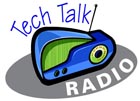For 20 million Australians, the 6
th October 2006 was an important day. The way we live, work and play began to change forever.
i
How, I hear you ask? An act of terrorism? A natural disaster of unprecedented proportions? Or maybe a scientific breakthrough to revolutionise our busy lifestyles?
Well, no. Sorry to disappoint. It was just Telstra announcing an increase in the data rate of its mobile phone network, that’s all. The bit about “Australians’ lives changing forever” was a part of CEO Sol Trujillo’s speech at the launch of “Next G”, Telstra’s new wideband CDMA telephone network.
Similarly bold claims were again made yesterday by the incumbent telco, in a Media Release entitled “Telstra super-charges Next G network”ii. Yesterday Telstra apparently “super-charged” the speed of its Next G network from 3.6Mbps to 14.4Mbps, and boosted the cell range up to 200km for more than 40 rural and coastal sites.
Sigh. I took a deep breath and decided to “clarify” some issues on behalf of Telstra. For those of you confused about this monumental announcement worthy of a Telstra media release, here are some home truths about their Next G network.
Telstra is desparate to match its existing CDMA coverage, servicing regional and rural Australia, before turning off this legacy network next January.iii The smoke-and-mirrors announcements (the likes of which we saw yesterday) are designed to distract customers from the millions of dollars they were forced to invest in a CDMA network, after the AMPS system was switched off about 10 years ago.
Additionally, Telstra’s laboratory tests have little bearing on reality. Telstra’s media release says that speeds on Next G network have been “super-charged” from 3.6Mbps to 14.4Mbps and cell range has been boosted up to 200km for more than 40 rural and coastal sites. So for those sites, I can be sitting 200km from the cell and get speeds of up to 14.4 Mbps on the data card in my laptop? Sorry to break the bad news, but no. This is misleading for a number of reasons.
One, these data speeds to the base stations accommodate all voice and data traffic for that base station. 14Mbps is a maximum data rate and only achievable sporadically, not continuously, under extraordinarily good radio conditions. Additionally, the base station is a shared resource. Multiple simultaneous users each take a share of that 14Mbps. Put simply, the fastest data speed is only achievable when there are no other subscribers using the base station and you have a “perfect” radio path with no signal degradation or interference.
By its own admission, Telstra have said data rates of 2.3Mbps had been recorded during testing at distances of 200km.iv 2.3Mbps is a far cry from 14Mbps.
On top of this, voice traffic is always prioritised above data. So the more people that are using the base station for voice calls, the less likely you are to maintain high data speeds on your laptop or mobile device.
There are other technical limitations too. Radio power is shared amongst all subscribers, so that “cell-edge users” needing, for example, a 20-watt signal from the base station might be consuming half of that base station’s possible power ouput. Upstream network traffic is also a consideration, which is a measure of how many calls or data connections the base station can support back to the network. A base station might only be provisioned for 8Mbps, for example. Remember that a chain is only as strong as its weakest link and Next G is no exception.
Bear in mind that products supporting these speeds aren’t even available to the Australian market. We won’t be seeing 14Mbps cards for at least another 6 months.
What we’d like to see from Telstra’s media machine is an announcemnt about high-speed broadband being available over the fixed line network. Australians are screaming for fast, reliable internet connectivity to their homes, not “super-charged” bandwidth to their mobile telephones. Telstra needs to break the bizarre love triangle with the ACCC and the Federal Government, not only in the interests of its shareholders but, just as importantly, in the interests of its customers, and start investing in landline infrastructure to support true broadband to Australian homes and businesses. This, however, is a rant for another occasion.
Dr Ron
i Company announcement from Telstra to Australian Stock Exchange, 10/11/2006, re the launch of Telstra’s “Next G” 3rd-generation WCDMA telephone network on 06/10/2006.
ii Telstra Media Release “Telstra super-charges Next G™ network” by Peter Taylor, 15/02/2007. http://www.telstra.com.au/abouttelstra/media/release.cfm?ObjectID=39138
iii From “CDMA switch-off in 12 months” by Michael Sainsbury and Richard Kerbaj, Australian IT News, 06/02/2007. http://australianit.news.com.au/articles/0,7204,21179897%5E15306%5E%5Enbv%5E,00.html
iv From “Next G claims range record” by Staff Writers, Australian IT News, 13/02/2007. http://australianit.news.com.au/articles/0,7204,21219295%5E26559%5E%5Enbv%5E15306%2D15320,00.html
Filed under: Dr. Ron, Next G, Rumour and Speculation, Telstra, WCDMA | Leave a comment »






 Telstra have let their PR bull terrier out of his cage again, and he’s certainly got his hackles up.
Telstra have let their PR bull terrier out of his cage again, and he’s certainly got his hackles up.